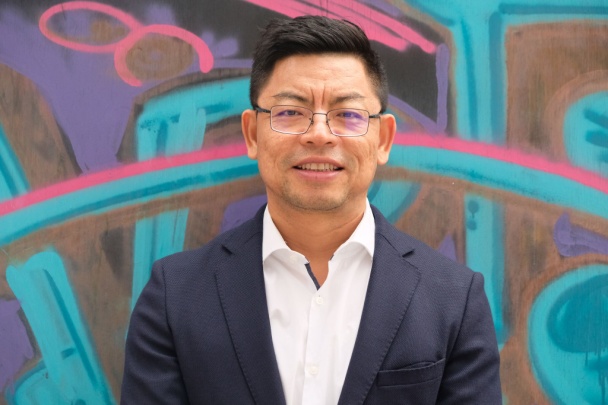报告题目:“Binary Materials” for Photodetection from Mid-Infrared, Visible, to X-ray
报告人:Tom Wu (吴韬),
School of Materials Science and Engineering, University of New South Wales (UNSW), Sydney, NSW 2052, Australia
时间:8月22日(星期四) 上午9:00-11:00
地点:李薰楼249会议室
摘要:
 Light-matter interaction is a long-lasting theme in condensed matter physics and optoelectronics. Light detection in different wavelength regimes is the foundation of a wide range of sensing, imaging, medical and surveillance technologies. Here I will discuss the applications of transition-metal oxides, hybrid organo-metal perovskites and functional nanomaterials in “binary” mixed-dimensional heterostructures with proper bandgaps and architectures to detect photons with different wavelengths. First, for visible light detection, we demonstrate that combining 3D hybrid perovskites with high-mobility 1D carbon nanotubes or 2D two-dimensional metal dichalcogenides significantly enhances charge transport and device performance [1-3]. Second, we report a mid-infrared (up to 10 um) mixed-dimensional photodetector enabled via coupling graphene with a narrow bandgap semiconductor Ti2O3 [4]. Finally, using epitaxial ferroelectric/semiconductor oxide junctions with a current-perpendicular-to-plane geometry, we achieve a new type of X-ray detector with colossal persistent X-ray-induced photoconductivity [5].
Light-matter interaction is a long-lasting theme in condensed matter physics and optoelectronics. Light detection in different wavelength regimes is the foundation of a wide range of sensing, imaging, medical and surveillance technologies. Here I will discuss the applications of transition-metal oxides, hybrid organo-metal perovskites and functional nanomaterials in “binary” mixed-dimensional heterostructures with proper bandgaps and architectures to detect photons with different wavelengths. First, for visible light detection, we demonstrate that combining 3D hybrid perovskites with high-mobility 1D carbon nanotubes or 2D two-dimensional metal dichalcogenides significantly enhances charge transport and device performance [1-3]. Second, we report a mid-infrared (up to 10 um) mixed-dimensional photodetector enabled via coupling graphene with a narrow bandgap semiconductor Ti2O3 [4]. Finally, using epitaxial ferroelectric/semiconductor oxide junctions with a current-perpendicular-to-plane geometry, we achieve a new type of X-ray detector with colossal persistent X-ray-induced photoconductivity [5].
1.F, Li, et al., Nature Communications, 2015, 6, 8238.
2.C. Ma, et al., Advanced Materials, 2016, 28, 3683.
3.F. Li, et al., Advanced Materials, 2017, 29, 1602432.
4.X. Yu, et al., Nature Communications, 2018, 9, 4299.
5.W. J. Hu, et al., Advanced Functional Materials, 2018, 28, 1704337.
报告人简介:
Dr. Tom Wu (吴韬) is a professor in the School of Materials Science and Engineering at University of New South Wales (UNSW) in Sydney, hired through the Strategic Hires and Retention Pathways (SHARP) scheme. He received his B.S. degree from Zhejiang University in 1995 and Ph.D. degree from the University of Maryland, College Park in 2002. Before joining UNSW, Dr. Wu worked as postdoc in Argonne National Laboratory in Chicago, assistant professor in Nanyang Technological University (NTU) Singapore, and associate professor in King Abdullah University of Science and Technology (KAUST). Dr. Wu has authored 260 peer-reviewed papers with citations of about 14,000 and a H-index of 68. His research explores oxide thin films, nanomaterials, and hybrid perovskites, with a focus on their electronic, magnetic and optical functionalities. His group has witnessed the career development of 18 PhD students and 29 postdocs. He also serves as an Associate Editor for ACS Applied Materials & Interfaces.



